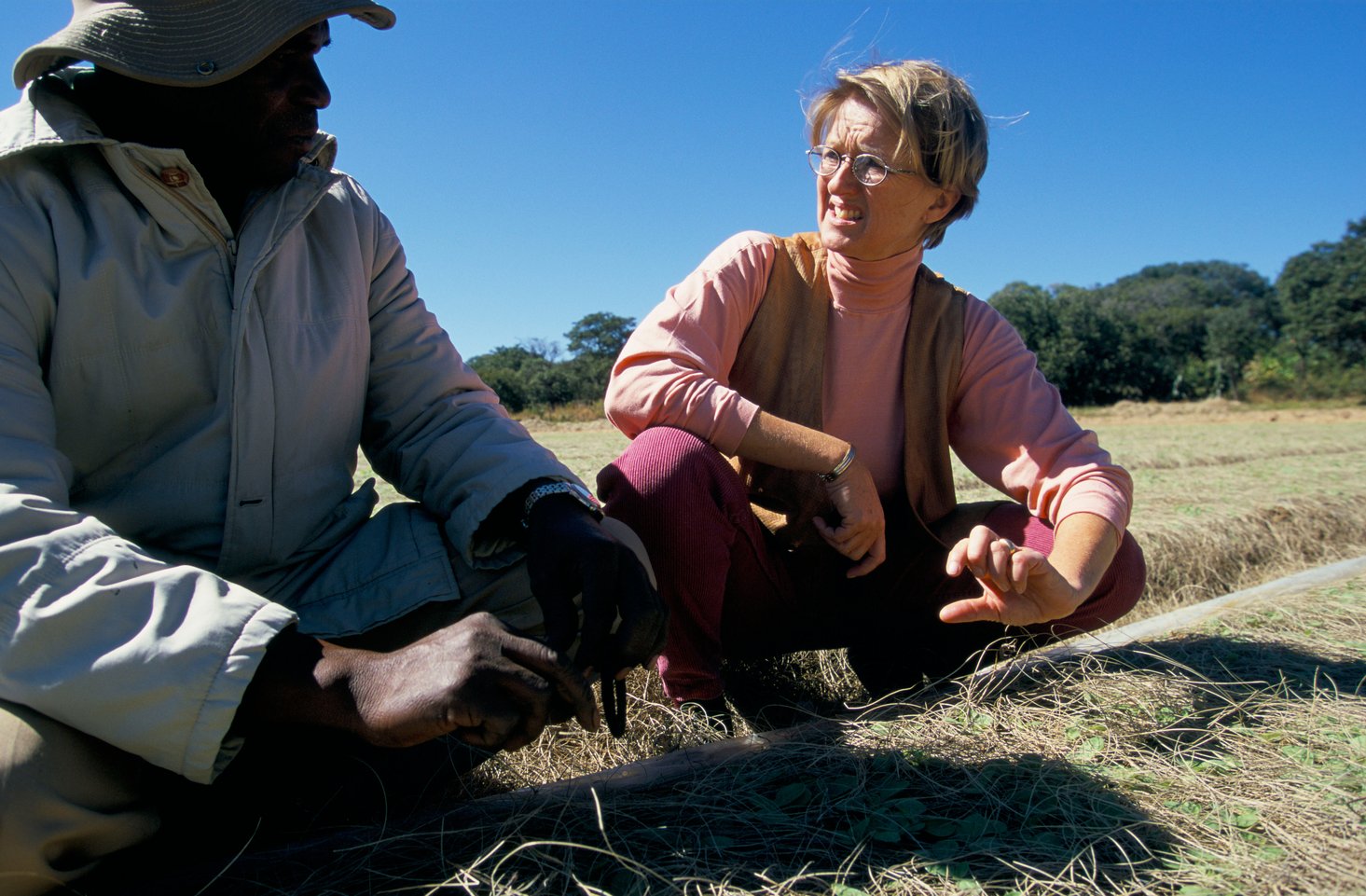Decolonization
Why Newly Independent Countries Must Reject Radical Decolonization
The contrasting histories of Singapore, Tanzania, and Sri Lanka demonstrate the dangers of attempting to erase the colonial past.

Amid the prevailing academic discourse about “decolonization,” the concept of syncretism seems conspicuously absent. Yet syncretism was a prevalent phenomenon in the ancient world, where diverse societies, brought together through conquest, trade, or cultural exchanges, frequently found themselves exposed to foreign beliefs and practices. This exposure catalysed cultural and religious amalgamations. A notable example of this ancient syncretism unfolded during the Hellenistic period, when Greek culture became interwoven with local customs in the territories conquered by Alexander the Great. This intricate blending of cultures gave rise to Hellenistic religions that seamlessly merged Greek and indigenous beliefs.
Syncretism has also played a powerful role in the development of the nation-state of Singapore. The establishment of modern Singapore can be traced back to the early 19th-century rivalry between the British and the Dutch. The British East India Company sought to extend its influence in Southeast Asia by safeguarding its interests along the lucrative trade route connecting China with British India. Meanwhile, the Dutch, who already controlled parts of the East Indies, including present-day Indonesia, wanted to dominate trade routes and secure monopolies in the region. Their insistence that trade be conducted exclusively at their entrepôt Batavia (present-day Jakarta, Indonesia) meant heavy taxes on British trading ships at Dutch ports, severely hampering British trade in the area.
In a strategic move, British colonial official Stamford Raffles negotiated a treaty with local Malay rulers Sultan Hussein Shah of Johor and the Temenggong Abdul Rahman. This ultimately resulted in the incorporation of Singapore, a small island at the southern tip of the Malay Peninsula, into the British Empire in 1819. But this wasn’t a mere territorial annexation; it represented a political-economic vision. As George Winder, former Solicitor of the Supreme Court in New Zealand, put it: “If Adam Smith was the first to advocate free enterprise, Stamford Raffles was the first administrator to put the system into practice.”
Having witnessed the disadvantages of the tightly regulated Dutch trade routes, Raffles sought to distinguish Singapore by minimizing trade restrictions, tariffs, and taxes. By adopting a policy of openness and reducing economic barriers, he hoped that Singapore would attract merchants, traders, and ships from across the globe—an approach that would stimulate economic activity, enhance commerce, and contribute to Singapore’s strategic importance as a key trading hub. As he puts it in a letter of 1819,
our object is not territory but trade; a great commercial emporium and a fulcrum whence we may extend our influence politically as circumstances may hereafter require [to further] the utmost possible freedom of trade and equal rights to all, with protection of property and person.
Amid the many postcolonial nations that have struggled with their colonial legacies, Singapore stands out as a compelling example of the value of syncretism and of the constructive embrace of diverse influences. Since gaining independence in 1965, the island nation has charted a unique course: it has not disavowed its colonial past, but strategically incorporated facets of that legacy into its societal and cultural fabric. This integration includes everything from the repurposing of Victorian neoclassical architecture into modern urban design to the adoption of a legal system rooted in British common law. This system makes Singapore’s legal landscape easy to navigate for businesses from other common law jurisdictions and provides them with reassurance as to their contractual rights. Most strikingly of all, Singapore uses English as the country’s primary language—a choice that renders the country easily accessible to the global business community and greatly increases its citizens’ work and social opportunities.
But above all, it is Singapore’s commitment to economic liberalism, in alignment with Raffles’ vision of free trade, that has catapulted the nation into becoming a global financial hub and trading powerhouse. In 2022, Singapore had a per capita GDP of $82,867, surpassing even that of the United States ($77,187), while maintaining an unemployment rate of only 2.76 percent. Despite the government’s substantial size—which is necessary since it operates as a benevolent dictatorship—and the country’s state-owned enterprises, Singapore is the world’s most “economically free” country, according to the Heritage Foundation’s Index of Economic Freedom. This reflects the country’s business-friendly regulatory environment, in which launching a business is uncomplicated, and procedures are streamlined. This approach also extends to international commerce: Singapore has an open and competitive trade regime and does not impose any tariffs on imports. The law treats foreign and domestic businesses equally, and nearly all sectors of the economy are open to 100 percent foreign ownership.

Many of the African countries that gained independence from the British around the same time as Singapore went in the opposite direction. The first generation of independent African leaders—men like Ghana’s Kwame Nkrumah—rejected what they perceived as Western institutions. For Nkrumah, democracy was “imperialist dogma,” a luxury Africa could not afford.
Capitalism and economic liberalism were also shunned as Western colonial ideologies, leading many African leaders to adopt socialism as their antithesis. Tanganyika, for example, gained independence in 1961 and merged with Zanzibar to form Tanzania in 1964. When President Julius Nyerere assumed leadership of the country, he drew parallels between capitalism and colonialism. Capitalism, in his view, was linked to “individual acquisitiveness and economic competition,” concepts he deemed foreign to Africa and potentially detrimental to the African social fabric and family structure. Instead, Nyerere advocated embracing “Ujamaa” principles that prioritize communal living and collective agriculture.
In 1967, Tanzania’s ruling party instituted a socialist state through the Arusha Declaration, which envisions a system in which the means of production are owned and controlled by workers and peasants. The primary objective of this declaration was to foster self-reliance by expanding agricultural production for domestic consumption. As part of this radical agenda, banks, insurance companies, and foreign trading entities were nationalized, and a “villagization” programme was introduced to encourage communal production, marketing, and distribution of farm crops. For Nyerere,
We shall achieve the goals we in this country have set ourselves if the basis of Tanzanian life consists of rural economic and social communities where people live together and work together for the good of all, and which are interlocked so that all of the different communities also work together in cooperation for the common good of the nation as a whole.
Central to the restructuring of Tanzanian rural society were the Ujamaa villages, cooperative agricultural settlements designed to promote voluntary communal living and collaboration. However, by the end of the 1960s, a noticeable gap had emerged between aspiration and reality. In 1969, a mere 5 percent of the population resided in Ujamaa villages. Since Tanzanians had failed to embrace Ujamaa principles voluntarily, the government began to pursue a more aggressive policy.

The Second Five-Year Plan (1969–1974) introduced a “frontal approach.” Government officials were urged to help establish Ujamaa villages and facilitate resettlement. Large-scale campaigns, including “Operation Dodoma,” “Operation Sogeza,” and “Operation Kigoma,” were initiated to resettle farmers. These efforts often involved the forceful relocation of peasants. Some of those who resisted were killed. The resulting abandoned buildings were demolished to discourage people from returning to their previous homes.
By 1976, an astonishing 13 million peasants, approximately 91 percent of the rural population, had been resettled into 8,000 cooperative villages. These measures led to a decline in agricultural productivity. Many Tanzanian farmers were unfamiliar with communal farming practices, and the absence of individual incentives depressed agricultural output. The Ujamaa policy was bureaucratic and inflexible. Decisions were usually made at the top levels of government, limiting local autonomy and hindering responsiveness to specific local needs.
Between 1970 and 1982, food crop output increased by only 2.1 percent, while the population grew by 3.5 percent. By 1981, a severe hunger crisis gripped the nation. In a bid to prevent widespread starvation, Tanzania had to import one million tons of grain, at a cost of approximately 2,000 million Shillings. From 1974 to 1982, Tanzania’s per capita income stagnated at $210 per annum. As Nyerere’s rule neared its end, Tanzania found itself among Africa’s most impoverished nations and was heavily reliant on international aid. The disastrous Ujamaa era finally came to an end in 1985, when Nyerere relinquished the presidency to Ali Hassan Mwinyi.
Today, Tanzania still struggles with the challenges that stem from antiquated investment regulations, while an imposing bureaucracy hinders investments. Statista Research Department has reported that, as of 2022, almost 26 million Tanzanians, around 40 percent of the total population, were living in extreme poverty, which is defined as earning less than $1.90 per day.






